
An African Adventure | Part 5
A story of a fishery, where no fishery has been before | Part 5
The project was really starting to take shape. Both dams had been left untouched for a year, allowing the aquatic ecosystems to mature before stocking them with fish. In August 2022, we stocked 71 carp into the beautiful 8.6-acre Carp Corner, where they joined the 125 Tigerfish already in residence.
The larger dam—12 acres in size and affectionately named Tiger Bay—was stocked with 225 Tigerfish. We also introduced a healthy population of Tilapia, including some impressive specimens weighing up to 5kg. While their main role was to serve as a food source for the Tigers, we quickly realised Tilapia are a highly prized species in this part of the world too.
Just when you think the hard work’s done and it’s time to put your feet up, we got a call from a staff member: there were some “strange-looking dogs” in one of the dams. “Strange-looking dogs”? Upon arrival, my heart sank. Two otters were frolicking in Carp Corner. Beautiful animals, yes—but not what you want to see in a freshly stocked dam! And nor were the occasional crocodiles that had made fleeting appearances in recent months...
Piet and I knew we had to act fast. We spoke to a friend, a former crocodile farmer, who gave us advice on what kind of barrier would work against these semi-aquatic reptiles. Electric fencing was out—it doesn’t shock crocs thanks to their thick, bony skin. So, we devised a plan: we’d use 60cm renewable hardwood spikes, hammered 20cm apart into the ground, with three strands of barbed wire running along them. Above that, we’d install standard electric fencing. The reality? We had 2.5km of fencing to complete. Definitely not a job for the faint-hearted.
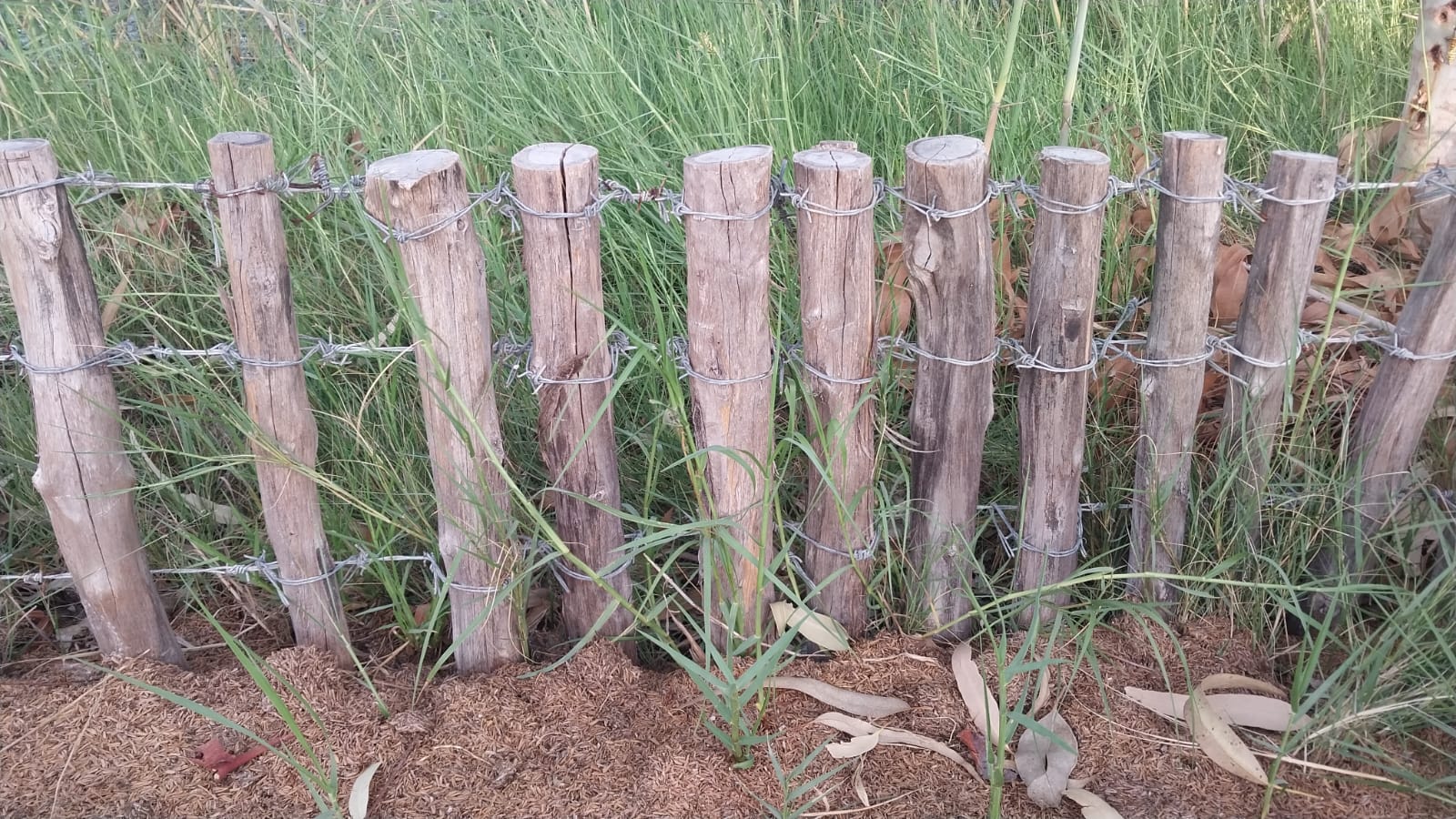
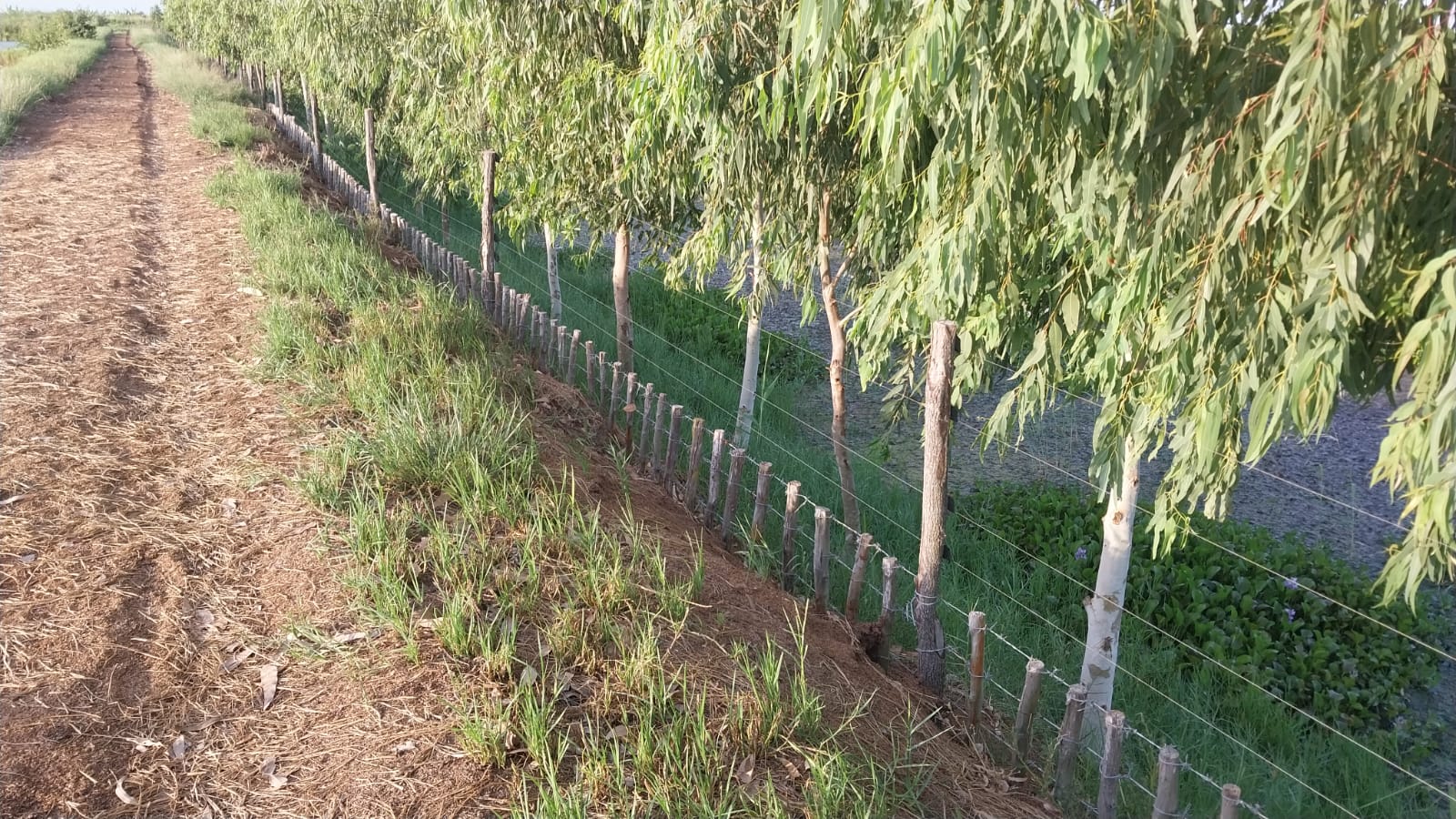
While all this was going on, we also had the excavator working to dam up the sides of a 12-hectare area we wanted to keep as wetland. The bird and insect life already thriving in and around the dams was incredible—we’d identified over 100 bird species alone. A stunning addition to the venue, offering a vast, natural habitat for countless creatures to thrive.
One day, as we were working on the fencing and watching the excavator carve out the wetland, Jack had a lightbulb moment: why not use the machinery to build up a couple of raised areas beside the dams for future cottage sites? Genius! We were creating a genuine oasis, a stark contrast to the barren, abandoned farmland surrounding us. That evening, over a couple of perfectly chilled gin and tonics, we settled on a name for the place: Waterside Retreat.

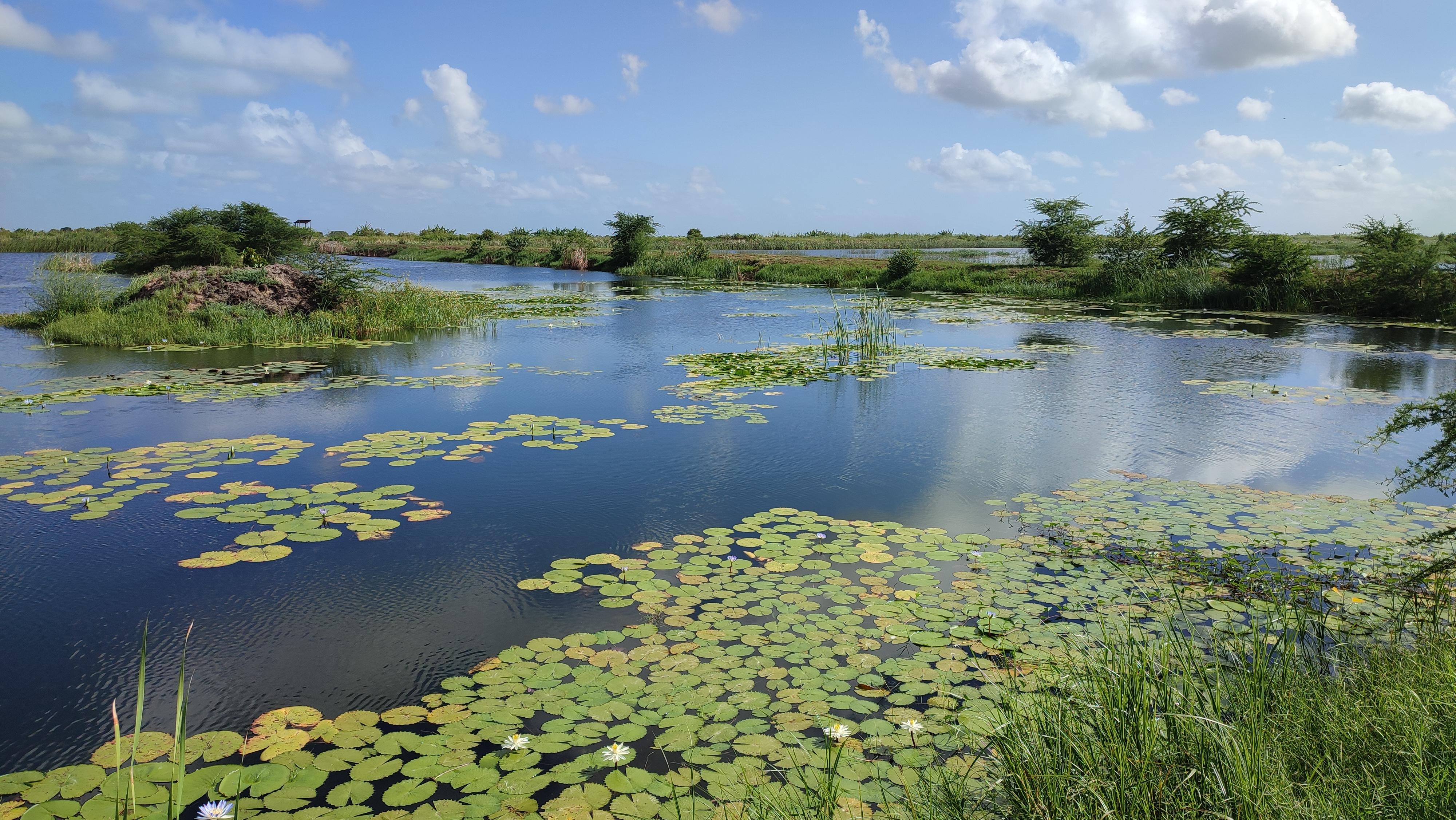
Fast forward to mid-May 2023. D-day. We were finally going to trial fish the venue for the very first time. A couple of very eager mates were joining me for a weekend at the dams. It had been more than two and a half years since we’d started the project, and the excitement was unreal. We arrived on Friday afternoon and spent the last few hours of daylight prepping tackle, readying the boat, and baiting an area for the carp. We even managed to catch a few Tilapia as the sun dipped below the horizon. Life felt pretty marvellous—but the real fishing was still to come.
We were up early and straight to the dams. While Scottish Dave opted to cast lures from the bank, Haydn and I took the boat out for its maiden voyage on Tiger Bay. We glided silently over the water using the electric trolling motor, stopping at likely-looking spots. Dropping a line into a venue that had become such a big part of my life was a real moment. After all the challenges of transporting and stocking Tigerfish, this was the payoff. Now I just needed one of the 225 toothy predators to actually bite.
I was about to say to Haydn that I thought my lure might be too big—most of the Tigers we stocked over a year ago were only between 100–400g. Then Boom! Something hit the lure like a freight train. The rod bent double, and the braid screamed off the reel. Chaos erupted. A huge fish exploded at the surface, leaping like a salmon. I was stunned. Surely this was a Tigerfish—nothing else behaves like that—but it was massive!
Clinging to the rod, heart thumping, the boat spun as the fish powered towards a patch of reeds. Then it burst through the surface again, shaking its head violently—those unmistakable teeth on full display. There was no doubt now: this was a Tiger, and a proper one at that.
Haydn was nearly as emotional as I was, shouting, “Hold on, my son, hold on!” Eventually, the fish began to tire. I took control, eased it towards the boat, and Haydn netted it perfectly first time. We lifted it aboard and just stared. A pristine Tigerfish of around 4kg, with gnashers bigger than mine—my first from our venue. I could hardly speak. How was it this big already?
As you’ll know from my previous articles, Tigerfish may look like gangsters, but they’re delicate and don’t respond well to stress. Our priority was to return it safely. We quickly unhooked it, snapped a couple of pics, and I held it by the boat to recover. It gave one kick of the tail and shot off back into the depths.
Mind blown, we headed back to dry land. Piet rocked up with lunch and beers—his trademark hospitality. I tried to downplay what had just happened. “Yeah, caught one,” I said casually. When I showed him the photos, he was flabbergasted—accused us of Photoshopping it!
We sat at the water’s edge, cold ones in hand, and Scottish was buzzing too—he’d landed a decent Tiger from Carp Corner. In the afternoon, Haydn fancied a crack at one on the fly, so he and Scottish took the boat out on Tiger Bay. I fancied seeing if the carp fancied some tiger nuts and sweetcorn I’d been pre-baiting near a patch of lilies.
With two rods out—no need for more, given the small, weedy area—I was suddenly struck by the surrealness of it all. An Englishman, carp fishing his own venue… in Mozambique. Still buzzing from the morning’s Tiger, I watched the wind pick up, blowing straight into my corner. Conditions looked perfect, but I wasn’t sure if the carp would get straight on the bait, especially with the dam teeming with naturals. I’d spent hours collecting snails, shrimp, mussels—basically, carp caviar—plus native macrophytes and marginal plants. All of these had been left to flourish before we introduced fish. For nine months, that’s what the carp had been feeding on.
But within two hours, my right-hand alarm shrieked into life. A carp had taken the bait! I had to pile on the pressure to keep it from reaching the lilies, but luckily it shot out into open water, stripping 20 metres of line in a flash. My heart was pounding. Soon it was close, and up it came—so dark it was almost black. One last lunge and into the net it went.
I couldn’t believe it. After all the graft, to be looking down at a beautiful, jet-black carp—clear water does that to them—was just unreal. The lads came round to help weigh and photograph it. I was beaming.
Once safely returned, I flicked through the old stocking pics. Found it. Nine months ago, this fish had been 2.3kg (5lb). Now? 6.5kg (14.3lb)! Astonishing. It made me wonder how the others were doing...
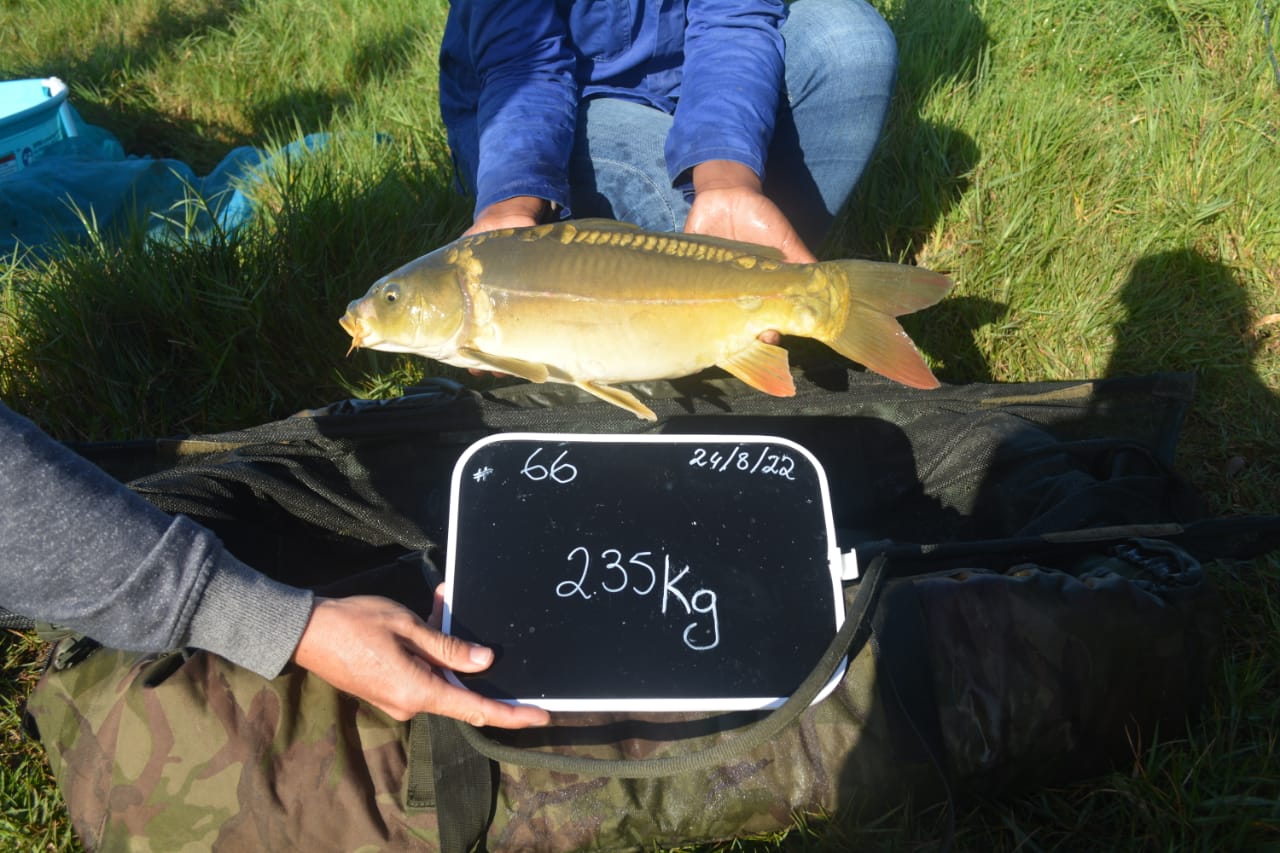
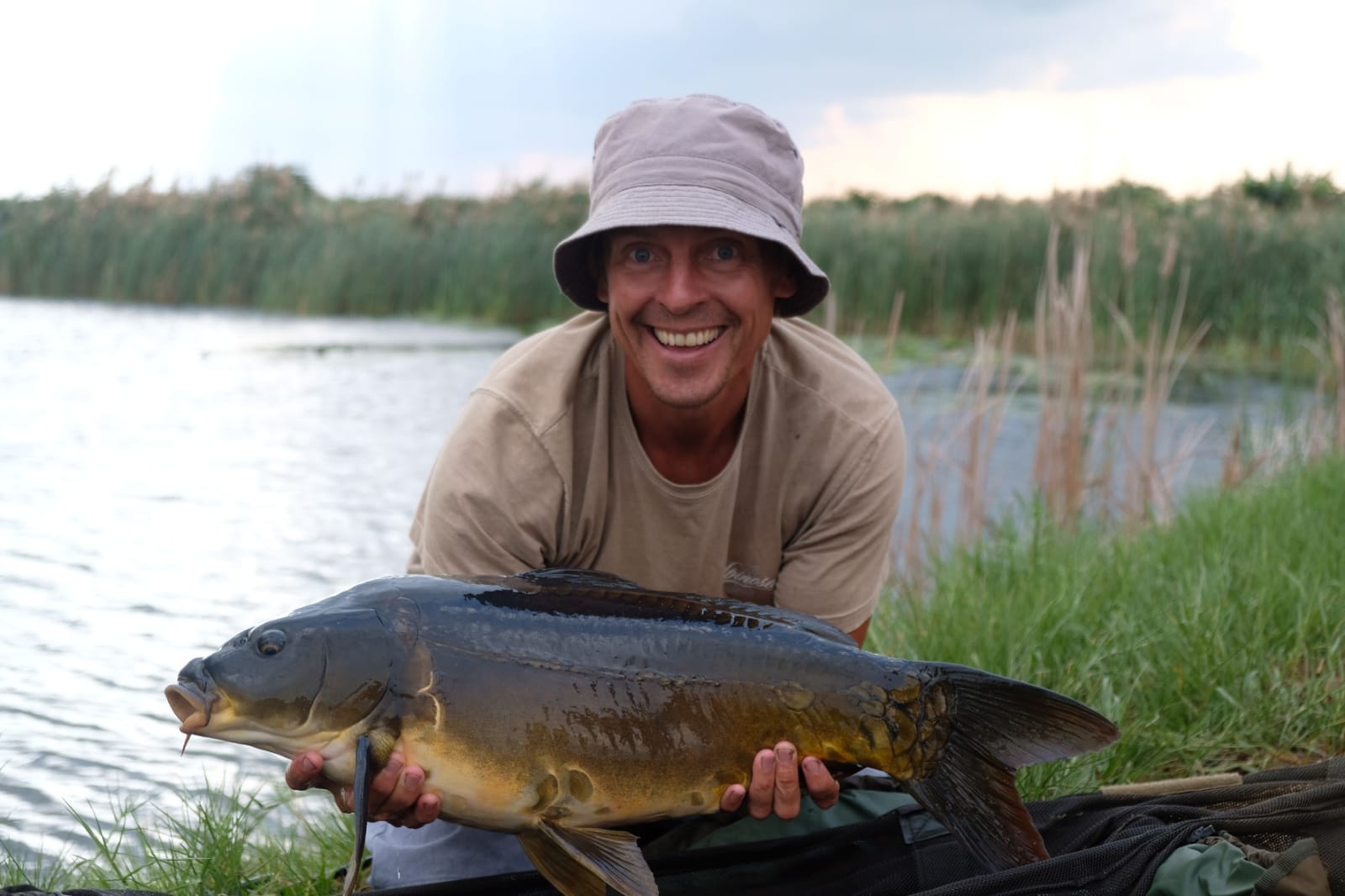
I wanted the lads to have a go, so I recast. Haydn and I sat in the grass, laughing in disbelief. Then—bang!—same rod, off again. Haydn jumped on it. Now, as a South African fly angler, he’s used to right-hand reel handles—not the left-handed setup I use. Still, he adjusted like a pro, eyes popping every time the fish tore off.
It surfaced—jet black—and I knew it instantly. One of the biggest we’d stocked, with a yellowy mark on its left flank. I’d nicknamed it Colonel Mustard, and it was giving Haydn hell. Its huge tail slapped the surface as it dived again. Finally, it tired. Into the net it went. Haydn had only gone and landed Colonel blooming Mustard! The scales swung round to 8.2kg (18lb). An incredible fish, and I was made up for him.
The next day we had to leave at midday—Haydn had a meeting to get to. The lads took the boat out for one last go at a Tiger. I wandered back to my carp spot, threw in some bait and went walkabout. Piet called—breakfast was ready. Hard to refuse! I raced to the cottage, wolfed it down, and bolted back.

Sure enough, the bubbles were back. The carp were still feeding. One rod, straight back on the spot... A couple of beeps, then a one-toner. Game on. This one felt even stronger, powering off into open water and towards the lilies. I held on, praying everything held. Eventually, it surfaced—another chunk. Into the net it went. I bellowed for the lads, and called Piet. Everyone came to see. I recognised the fish from the stocking too—it had a funny dink above its right gill plate. The guys named it Dinky, and who was I to argue? The scales settled at 9.6kg (21.1lb). It had put on 5.7kg (12.5lb) in just nine months. Proof, if ever it was needed, that our carefully crafted ecosystem was working.
The weekend had blown all expectations out of the water. As the dust settled, I couldn’t help but wonder—what does the future hold for this extraordinary place when we finally open?
Dave Charley
WhatsApp: +258 845901250






